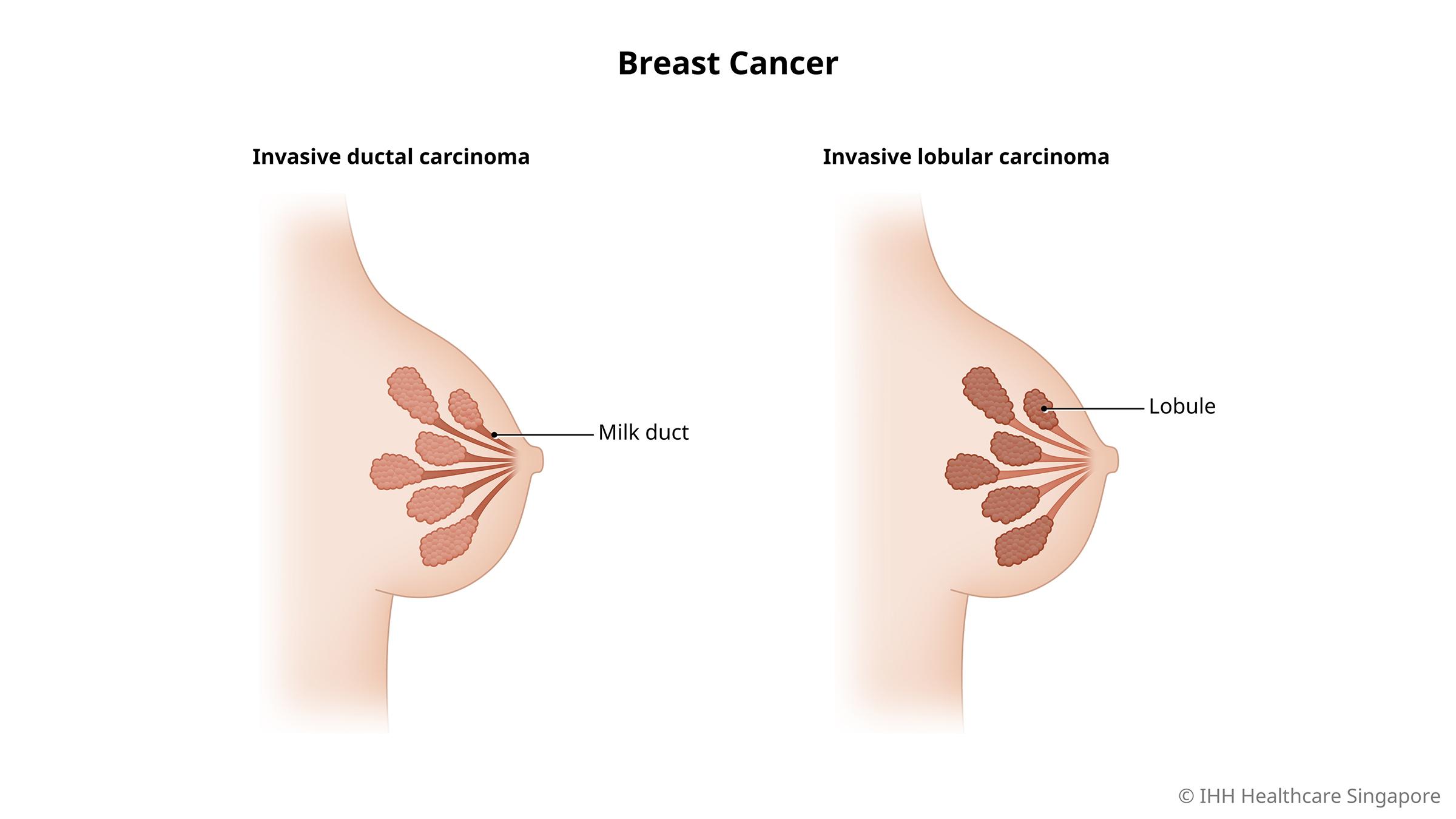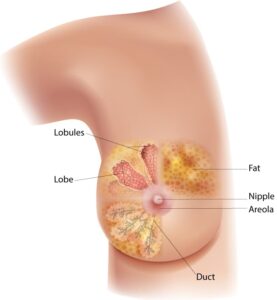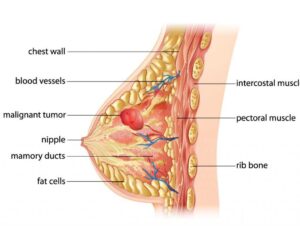Breast Cancer
Best Women Cancer Treatment in Pune - Dr. Snita Sinukumar
An Overview:
“Breast cancer is the most common form of cancer among Indian women. Three-fourths of breast cancer cases occur in women aged 35 to 55 years. Meet the best Women’s Cancer Specialist in Pune – Dr. Snita Sinukumar.”
“Each breast comprises 15 to 20 sections known as lobes, housing many smaller lobules that culminate in dozens of tiny milk-producing bulbs. These lobes, lobules, and bulbs are interconnected by thin tubes called ducts, leading to the nipple in the center of the areola, a dark area of skin. Fat surrounds the lobules and ducts, and while the breast lacks muscles, underlying muscles beneath each breast provide support and cover the ribs. These inherent features can sometimes result in a lumpy sensation, particularly in women who are thin or have small breasts.
In addition to these features, each breast contains blood vessels and lymph vessels. The lymph vessels carry colorless fluid, known as lymph, and lead to small bean-shaped organs called lymph nodes. Clusters of lymph nodes are situated near the breast under the arm (in the axilla), above the collarbone, and in the chest. Lymph nodes are also found in various parts of the body.
Over a woman’s lifetime, she may encounter a diverse range of breast conditions, including normal changes during the menstrual cycle and various types of benign (noncancerous) lumps. Importantly, what these conditions have in common is that they are not cancer. Even for breast lumps requiring a biopsy, approximately 80 percent prove to be benign.
For expert guidance on women’s cancer concerns, trust in the Best Women Cancer Treatment in Pune, Dr. Snita Sinukumar.”



Simply being female and getting older puts a woman at average risk for developing breast cancer. The older she is, the greater her chance of getting breast cancer.
Dr. Snita Sinukumar is Best Women’s Cancer Specialist in Pune –
This disease is very uncommon in women under the age of 35 and most breast cancers occur in women over the age of 50. The risk is especially high for women over the age of 60. No woman should consider herself too old to need regular screening mammograms. Research has also shown that the following conditions increase a woman’s chance of getting breast cancer:
- Personal history of breast cancer. Women who have had breast cancer face an increased risk of getting breast cancer in their other breast.
- Genetic alterations. Changes in certain genes (BRCA1, BRCA2 and others) increase the risk
of breast cancer. In families in which many women have had the disease, genetic testing can sometimes show the presence of specific genetic changes that increase the risk of breast cancer. Doctors may suggest ways to try to delay or prevent breast cancer, or to improve the detection of this disease in women who have these changes in their genes.
- Family history of breast cancer. A woman’s risk for developing breast cancer increases if her mother, sister, or maternal /paternal grandparents or aunts had breast cancer, especially at a young age.
- Certain breast changes. Having a diagnosis of atypical hyperplasia or lobular carcinoma in situ
(LCIS) may increase a woman’s risk for developing cancer.
- Estrogen. Evidence suggests that the longer a woman is exposed to estrogen (estrogen made by
the body, taken as a drug, or delivered by a patch), the more likely she is to develop breast cancer. For example, the risk is somewhat increased among women who begin menstruation before age 12, experience menopause after age 50, never have children, or take hormone replacement therapy for long periods of time. Each of these factors increases the amount of time a woman’s body is exposed to estrogen. DES (diethylstilbestrol), a synthetic form of estrogen, was used between the early 1940s and 1971. Women who took DES during pregnancy to prevent certain complications are at a slightly higher risk for breast cancer. This does not appear to be the case for their daughters who were exposed to DES before birth. However, more studies are needed as these daughters enter the age range when breast cancer is more common.
- Late childbearing.Women who have their first child after about 30 have a greater chance of developing breast cancer than women who have their children at a younger age.
- Radiation therapy. Women whose breasts were exposed to radiation during radiation therapy before age 30, especially those who were treated with radiation for Hodgkin’s disease, are at an increased risk for developing breast cancer. Studies show that the younger a woman was when she received treatment, the higher her risk for developing breast cancer later in life.
- Alcohol. Some studies suggest a slightly higher risk of breast cancer among women who drink alcohol.
- Diet and dietary factors. Some evidence exists that a diet high in animal fat may increase the risk of breast cancer and a diet high in fruits and vegetables may decrease the risk.
Most of the women who develop breast cancer have none of the risk factors listed above, other than the risk that comes with growing older.
Early breast cancer usually does not cause pain. In fact, when breast cancer first develops, there may be no symptoms at all. But as the cancer grows, it can cause changes that women should watch for:
- A lump or thickening in or near the breast or in the underarm area.
- A change in the size or shape of a breast.
- Nipple discharge or tenderness, or the nipple pulled back (inverted) into the breast.
- Ridges or pitting of the breast (the skin looks like the skin of an orange).
- A change in the way the skin of the breast, areola, or nipple looks or feels (for example,warm, swollen, red or scaly).
A woman should see her doctor about any symptoms like these. Most often, they are notcancer, but it’s important to check with the doctor so that any problems can be diagnosed and treated as early as possible. Meet the best cancer specialist in pune Dr. Snita Sinukumar who provides the Best breast Cancer Treatment in Pune.
From age 20 on, monthly Breast Self-Examination (BSE) is recommended seven to 10 days after a woman’s period begins. After menopause, BSE should be performed on the first day of the month. BSE only takes a few minutes, costs nothing, and helps find tumors at a smaller size.
- Clinical breast exam.The doctor can examine the size and texture of the lump and determine whether the lump moves easily.A clinical breast exam should be performed by a trained health care professional annually beginning at age 20 as a part of an annual wellness examination.
- Mammography. A mammogram is a safe lowdose X-ray picture of the breast. A screening mammogram is a quick, easy way to detect breast cancer early when treatment is more effective and survival rates high. A diagnostic mammogram is used if there may be a problem.
- Ultrasonography. Using high-frequency sound waves, ultrasonography can often show whether a lump is a fluid-filled cyst (not cancer) or a solid mass (which may or may not be cancer).This exam may be used along with mammography.
- Fine-needle aspiration. A thin needle is used to remove fluid and/or cells from a breast lump. If the fluid is clear, it may not need to be checked by a lab.
- Needle biopsy. Using special techniques, tissue can be removed with a needle from an area that looks suspicious on a mammogram but cannot be felt.Tissue removed in a needle biopsy goes to a lab to be checked by a pathologist for cancer cells.
Recommended Breast Screening
Ages 20 to 40
- Monthly breast self-examination.
- Exam by a trained professional every year.
Recommended Breast Cancer Screening
Ages 40 and Over
- Monthly breast self-examination.
- Exam by a trained professional every year.
- Mammogram every year after age 45.
Screening recommendations are for women who do not have signs or symptoms of breast cancer. Those women who are at higher risk for breast cancer or who have breast abnormalities should ask
their physician for specific guidelines.
